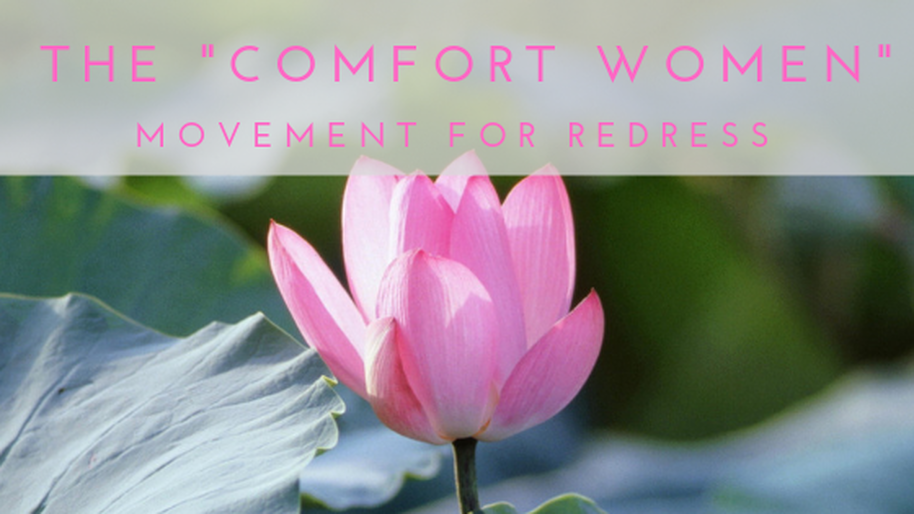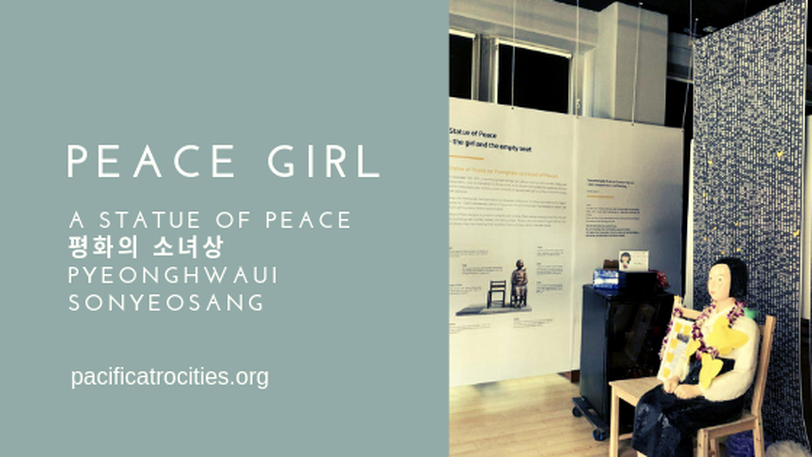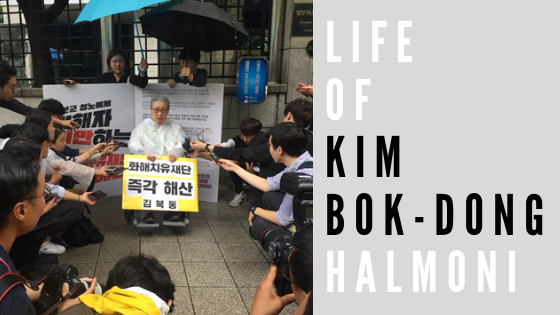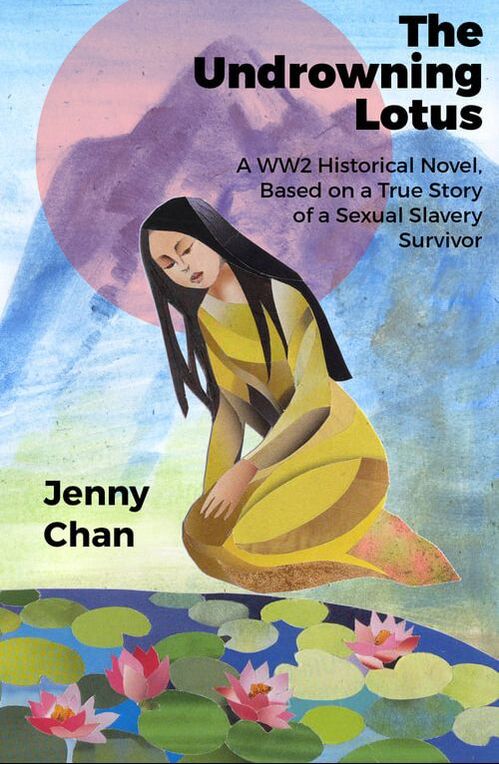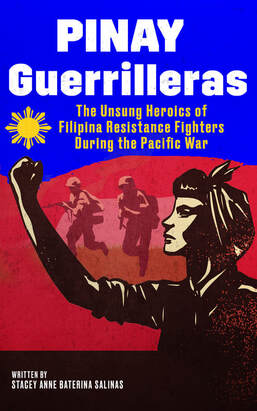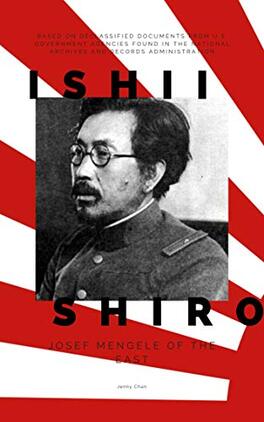|
by Sung Sohn from Education for Social Justice The term “comfort women” is an unjust euphemism referring to Japanese military sex slaves who were trafficked before and during WWII. While they came from many different parts of Asia, at least from 13 different countries, most of them were from poor families, and all victims were gang-raped repeatedly for years for the “comfort” of Japanese soldiers until the end of WWII. (continued) However, the victims’ suffering did not end with the war. In a patriarchal society where a woman’s value is equated with chastity, they often experienced shame and were afraid to speak out about their experiences. The “comfort women” system organized by the Japanese Imperial Army is a painfully inhumane outcome of imperialism, patriarchy, and discriminations based on gender, race, and socio-economic status all merged together. Years after WWII, realizing the impact of this injustice and concerned for future generations, surviving “comfort women” found the courage and came forward to tell the world their painful stories so that the crimes committed to them would never be repeated. In 1971, using a pen name, Suzuko Shirota (1921 – 1993) broke her silence with her memoir, In Praise of Mary. In 1991, encouraged by the successful democratization movement in the late 1980s in South Korea, Hak-Soon Kim (1924-1997) made the first public testimony. The power of each testimony, whether it was made in public or under an alias, became the core impetus for the redress movement for bringing peace and justice. Soon after Hak-Soon Kim came forward in 1991, about 240 victims came forward in South Korea alone. Activists, scholars, policymakers, and ordinary citizens from Korea, Japan, and other parts of the world joined the movement and ultimately expanded the movement globally. The victims are fighting against the Japanese government, not the people of Japan. Late victim Bok-Dong Kim (1926-2017) made this clear in 2011 when she and other survivors made a donation to the victims of a severe earthquake in Japan, stating, “We are not fighting against the people of Japan. We are fighting against the government that refuses to apologize for its wrongdoings.” What one victim voiced in Japan and Korea turned into a transnational redress movement. Beginning with the stone memorial to “Military ‘Comfort Women,’” erected upon the request of Suzuko Shirota, at the Kanita Women’s Village in Chiba in Japan in 1986, numerous memorials have been erected across the world remembering and honoring the victims of Japanese military sexual slavery. In the Philippines, after the two memorials honoring the former “comfort women” were removed in 2018 against the will of civic organizations and citizens who helped erect the memorials, another one was unveiled on private land in Caticlan in January of 2019, free from political interference and pressure. In California, the content of “comfort women” history is included in the 2017 California History-Social Science Framework. This passage, which is placed in the 10th grade 2017 H-SS Framework section 10.8, Causes and Consequences of WWII, after the question “How was the war mobilized on different fronts?,” is an excellent starting point for teaching students about the devastating impact of WWII in different parts in Asia. Despite the Japanese government’s repeated denials, attempts to rewrite history of “comfort women,” and pertinacious refusal to officially apologize and offer reparations, the transnational, resilient fights of the victims of Japanese military sexual slavery laid the solid foundation to redress the history of Japanese military sexual slavery and expand it to sexual violence against women in armed and non-armed conflict. Their redress movement also extends to promoting peace so that the crimes they suffered could never be repeated on to others. Although the phrase #MeToo was coined by Tarana Burke, Charlotte Clymer, and Alyssa Milano, it could be said that Hak-Soon Kim was a pioneer of the #MeToo movement with her courageous public testimony in 1991. As the number of survivors dwindles, the politics of denial and the attempts to erase and revise collective memory seem to gain momentum. However, the more the Japanese government tries to revise their history, the more they are going to be up against the resistance of transnational solidarity built by the supporters of women’s human rights, peace, and justice. As the more survivors suffer ailments associated with old age, the collective power of the supporters will multiply, carrying on the victims’ demands and hopes. The redress movement will continue, inspired by the many victims who ultimately became human rights activists and advocates for peace. The national image that Japan has created itself and the stories the Japanese government has been telling contradict the truth. Therefore, for their future generations, the Japanese government has a moral responsibility to face history squarely and respond with sincerity to the redress movement begun by the victims of sexual slavery. A formal acknowledgment, apology, and reparations from the Japanese government are the first steps in providing a modicum of comfort to the former Japanese military sex slaves. It’s long overdue. Sung Sohn Co-Founder & Executive Director Education for Social Justice Foundation sung(a)e4sjf.org Related ArticlesRelated Books
1 Comment
Асем Бекболат
11/23/2022 09:42:54 am
Здравствуйте
Reply
Leave a Reply. |
- Home
- Stories
-
Internship
- Summer 2024 Internship
- Summer 2023 Internship
- Fall 2022 Internship
- Summer 2022 Internship
- Summer 2021 Internship
- Fall 2020- Spring 2021 Internship
- Summer 2020 Internship
- Fall 2019 Internship
- Summer 2019 Internship >
- School Year 2018-2019 Internship
- Summer 2018 Internship >
- Fall 2017 Internship
- Summer 2017 Internship >
- Books
- Archives
-
Resource Page
-
Supplementary Research Guides
>
- Unit 731 - Guide >
-
Philippines' Resistance - Guide
>
- Philippines World War II Timeline
- The Japanese Invasion & Conquest of the Philippines
- Bataan Death March
- Formation of Underground Philippines Resistance
- Supplies of the Guerrilla Fighters
- The Hukbalahap
- Hunter's ROTC
- Marking's Guerrillas
- United States Army Forces in the Philippines of Northern Luzon (USAFIP-NL)
- The Aetas
- Chinese and Filipino-Chinese Nationalist Guerrilla Units
- The Female Faces of the Philippine Guerrillas
- Rising Sun Flag - Guide >
- Pinay Guerrilleras - Guide >
- Fall of Singapore - Guide >
- Three Years and Eight Months - Guide >
- Siamese Sovereignty - Guide >
- The Khabarovsk War Crimes Trial - Guide >
- Unit 731 Cover-up : The Operation Paperclip of the East - Guide >
- Marutas of Unit 731 - Guide >
- Prince Konoe Memoir - Guide >
- Competing Empires in Burma - Guide >
- Battle of Shanghai - Guide >
- Ishi Shiro - Guide >
- Taiwan The Israel of the East - Guide >
- Seeking Justice for Biological Warfare Victims of Unit 731 - Guide >
- Rice and Revolution - Guide >
- Clash of Empires - Guide >
-
Hunger for Power and Self-SufficiencyI - Guide
>
- The Influence of War Rations on Post-War Culinary Transformations
- How World War II Complicated Food Scarcity and Invention
- American Military Innovations
- Government-Sponsored Food Inventions in Europe during World War II
- Feeding the Army: The Adaptation of Japanese Military Cuisine and Its Impact on the Philippines
- Mixed Dishes: Culinary Innovations Driven by Necessity and Food Scarcity
-
Denial A Quick Look of History of Comfort Women and Present Days’ Complication - Guide
>
- The Comfort Women System and the Fight for Recognition
- The Role of Activism and International Pressure
- The Controversy over Japanese History Textbooks
- The Sonyŏsang Statue and the Symbolism of Public Memorials
- Activism and Support from Japanese Citizens
- The Future of Comfort Women Memorials and Education
- Echoes of Empire: The Power of Japanese Propaganda - Guide >
- Lesson Plans >
-
Supplementary Research Guides
>
|
Pacific Atrocities Education
730 Commercial Street San Francisco, CA 94108 415-988-9889 |
Copyright © 2021 Pacific Atrocities Education.
We are a registered 501 (c)(3) charity. |
- Home
- Stories
-
Internship
- Summer 2024 Internship
- Summer 2023 Internship
- Fall 2022 Internship
- Summer 2022 Internship
- Summer 2021 Internship
- Fall 2020- Spring 2021 Internship
- Summer 2020 Internship
- Fall 2019 Internship
- Summer 2019 Internship >
- School Year 2018-2019 Internship
- Summer 2018 Internship >
- Fall 2017 Internship
- Summer 2017 Internship >
- Books
- Archives
-
Resource Page
-
Supplementary Research Guides
>
- Unit 731 - Guide >
-
Philippines' Resistance - Guide
>
- Philippines World War II Timeline
- The Japanese Invasion & Conquest of the Philippines
- Bataan Death March
- Formation of Underground Philippines Resistance
- Supplies of the Guerrilla Fighters
- The Hukbalahap
- Hunter's ROTC
- Marking's Guerrillas
- United States Army Forces in the Philippines of Northern Luzon (USAFIP-NL)
- The Aetas
- Chinese and Filipino-Chinese Nationalist Guerrilla Units
- The Female Faces of the Philippine Guerrillas
- Rising Sun Flag - Guide >
- Pinay Guerrilleras - Guide >
- Fall of Singapore - Guide >
- Three Years and Eight Months - Guide >
- Siamese Sovereignty - Guide >
- The Khabarovsk War Crimes Trial - Guide >
- Unit 731 Cover-up : The Operation Paperclip of the East - Guide >
- Marutas of Unit 731 - Guide >
- Prince Konoe Memoir - Guide >
- Competing Empires in Burma - Guide >
- Battle of Shanghai - Guide >
- Ishi Shiro - Guide >
- Taiwan The Israel of the East - Guide >
- Seeking Justice for Biological Warfare Victims of Unit 731 - Guide >
- Rice and Revolution - Guide >
- Clash of Empires - Guide >
-
Hunger for Power and Self-SufficiencyI - Guide
>
- The Influence of War Rations on Post-War Culinary Transformations
- How World War II Complicated Food Scarcity and Invention
- American Military Innovations
- Government-Sponsored Food Inventions in Europe during World War II
- Feeding the Army: The Adaptation of Japanese Military Cuisine and Its Impact on the Philippines
- Mixed Dishes: Culinary Innovations Driven by Necessity and Food Scarcity
-
Denial A Quick Look of History of Comfort Women and Present Days’ Complication - Guide
>
- The Comfort Women System and the Fight for Recognition
- The Role of Activism and International Pressure
- The Controversy over Japanese History Textbooks
- The Sonyŏsang Statue and the Symbolism of Public Memorials
- Activism and Support from Japanese Citizens
- The Future of Comfort Women Memorials and Education
- Echoes of Empire: The Power of Japanese Propaganda - Guide >
- Lesson Plans >
-
Supplementary Research Guides
>
